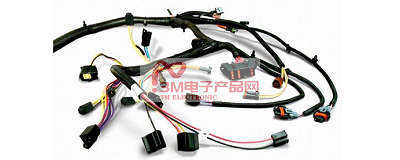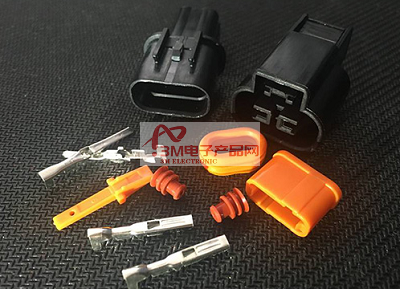Categorization:Product Information
According to the different transmission media, automotive connectors can be divided into high-speed connectors for the transmission and exchange of data signals and electrical connectors for the transmission and exchange of current, and according to the different operating voltages, electrical connectors can be further divided into low-voltage connectors and high-voltage connectors. Low-voltage connectors are usually used for BMS, air-conditioning systems, lights, etc. of traditional fuel vehicles, and the working voltage is generally 14V.

High-voltage connectors are commonly used in new energy vehicles, which generally need to provide 60V380V or even higher voltage level transmission and 10A-300A or even higher current level transmission according to different scenarios. High-voltage connectors are mainly used in batteries, PDUs (high-voltage distribution boxes), OBCs (on-board chargers), DC/DC, air conditioning, PTC heating, and direct/AC charging interfaces in new energy vehicles. High-speed connectors are categorized into FAKRA RF connectors, Mini-FAKRA connectors, HSD (High-Speed Data) connectors and Ethernet connectors, which are mainly used in cameras, sensors, broadcasting antennas, GPS, Bluetooth, WiFi, keyless entry, infotainment systems, navigation and driver assistance systems. High-voltage connector connects electrification, high-speed connector connects intelligence.1) Different from traditional fuel vehicles, the core components of new energy vehicles lie in the three-electric system of battery, motor and electronic control. Due to the principle of new energy vehicles adopting electric power to drive motors, in order to achieve greater torque and torque, it is necessary to provide high-power drive energy, which requires a corresponding high voltage and high current, far exceeding the 14V voltage of traditional fuel vehicles. High-voltage connectors came into being.2) With the opening of the era of Telematics and the popularization of intelligent driving, there is a need to collect and process more data at a faster speed, a class of inside and outside of the vehicle cameras, radar, LIDAR and other sensors, a class of sensors, including the vehicle-to-vehicle (V2V), vehicle-to-the-network (V2N), vehicle-to-infrastructure (V2I), vehicle-to-pedestrian (V2P), vehicle-to-utility ( V2U), and Vehicle-to-Utility (V2X) wireless communications, these technologies generate, send, receive, store, and process massive amounts of data. For example a LIDAR module that provides highly accurate, high-resolution 3D and 360° imaging data around a vehicle may generate 70Mbps of data traffic, a camera may generate 40Mbps of data traffic, a RADAR module may produce 100Kbps of data traffic, and a navigation system may generate 50Kbps of data traffic. As the level of autonomous driving escalates from L2 and L3 to L4 and L5, the number of independent sensors will grow dramatically, and so will the total amount of data generated. Keysight predicts that a single self-driving car will generate approximately 4TB of data per day. The resulting massive real-time data transfer will drive demand for high-speed connectors and an upgrade from traditional FAKRA connectors to Mini-FAKRA connectors, making Ethernet a robust connectivity solution for next-generation automotive data networks.

2、About 3M electronic products network platform related to the introduction and sales of products briefly: 3M electronic products network - a professional agent / production / sales of a variety of {connectors | wiring harness | wire and cable products }; if you have a related [connectors | wiring harness | wire and cable products] purchasing / sourcing needs or would like to buy / to understand which connectors | wiring harness | wire and cable products we can provide solutions, please contact the Division I business personnel below; If you have related [connectors | wire harness | wire and cable products] sales / resources and promotion needs, please click on the "¡¡ Business Cooperation ←" with the person to discuss!